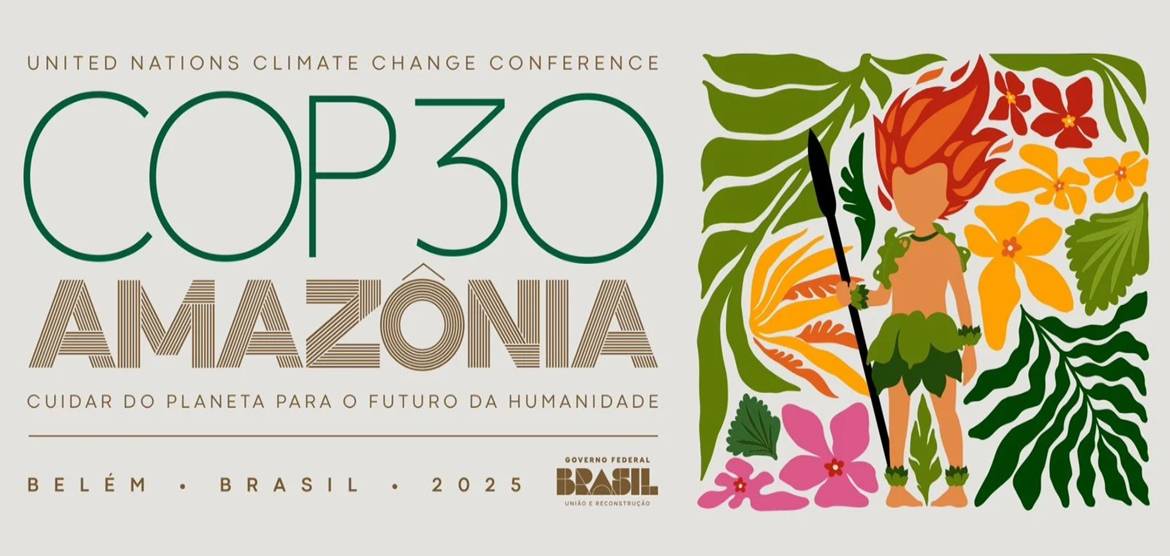As global leaders gather in Belém, Brazil, for the UN Climate Conference (COP30) from 10–21 November 2025, the world’s focus has shifted firmly to the Amazon—home to the planet’s largest rainforest, a frontline of both climate vulnerability and climate solutions. In a week marked by record temperatures, urgent scientific warnings, and growing social tensions, the United Nations released a series of statements between 12 and 15 November highlighting the defining themes shaping COP30: climate finance, public health, Indigenous rights, climate mobility, and the escalating human cost of environmental change. The message running through all these developments is unmistakable: climate change is no longer an abstract challenge to be managed in the future—it is a present-day crisis reshaping lives, institutions, and entire landscapes across the globe.
Climate Finance Takes Center Stage
On 15 November, the United Nations emphasized that climate finance has emerged as the defining battleground of COP30. At every negotiation table, officials acknowledged a stark reality: without adequate funding, there is no viable path to safety, justice, or survival for countries on the front lines of climate change. Speaking at the Third High-Level Ministerial Dialogue on Climate Finance, UN General Assembly President Annalena Baerbock urged governments to transform financial pledges into lifelines, calling for the implementation of up to $1.3 trillion in annual climate finance that reaches “those most in need, quickly, transparently and fairly.” Baerbock reminded delegates that climate action and social justice are inseparable, pointing to a cycle in which climate insecurity fuels hunger and poverty, which in turn trigger migration, conflict, and economic instability. Breaking this cycle, she said, is essential for meeting global climate goals. UN Climate Change Executive Secretary Simon Stiell reinforced this message, describing finance as the “lifeblood of climate action”—the force capable of turning plans into progress and ambition into implementation. Despite trillions invested globally in clean energy and resilience, Stiell warned that finance remains insufficient, unpredictable and unevenly distributed. “When finance flows, ambition grows,” he said, emphasizing that fast, fair, and real financing is the ultimate measure of global cooperation at COP30.
Health Emergency Moves to the Forefront
A major shift at COP30 has been the growing recognition that the climate crisis is also a global health crisis. On 14 November, the World Health Organization (WHO) and the Brazilian Government issued a report warning that climate change is already killing more than half a million people each year through extreme heat and is threatening hospitals worldwide. One in 12 health facilities could face climate-related shutdowns, while 3.3 to 3.6 billion people live in areas highly vulnerable to climate impacts. Health ministers and experts gathered in Belém launched the Belém Health Action Plan, a flagship COP30 initiative designed to place health at the heart of climate policy. WHO Director-General Dr. Tedros Adhanom Ghebreyesus called the climate crisis “a health crisis—here and now,” urging countries to build climate-resilient health systems, integrate climate and health data, and strengthen early warning mechanisms. More than 35 philanthropies pledged $300 million to accelerate climate-health solutions, focusing on extreme heat, air pollution, climate-sensitive diseases, and low-carbon healthcare systems. COP30 Health Envoy Ethel Maciel stressed that adapting health systems is urgent, highlighting last year’s catastrophic flooding in southern Brazil that triggered the country’s largest dengue epidemic in history—an example of climate-driven health threats unfolding in real time. She warned that deforestation in the Amazon could unlock unknown pathogens, underscoring the need for rapid, coordinated action.
Indigenous Rights and Protests Shake the Conference
Indigenous rights came to the forefront on 14 November when around 90 members of the Munduruku Indigenous group staged a peaceful protest blocking the main entrance to COP30’s Blue Zone. The demonstration halted access for about an hour before security forces arrived. The protesters demanded an end to projects and extractive activities threatening Indigenous territories, especially in the Tapajós and Xingu River basins. COP30 Executive Director Ana Toni described the protests as legitimate, emphasizing that Brazil’s decision to host COP30 in the Amazon was meant to ensure Indigenous voices are heard. More than 900 Indigenous participants are attending COP30—three times the number registered at last year’s conference in Azerbaijan. Indigenous youth representatives said their presence in Belém highlights the urgency of land rights, environmental protection, and political inclusion. “We are claiming the right to land, the right to life,” said Amanda Pankará from Pernambuco, stressing that Indigenous communities form a protective barrier for the Amazon and must be part of decision-making. Chilean Mapuche youth Emiliano Medina called the Amazonian COP “the most inclusive climate conference yet,” emphasizing that protests are essential tools to highlight policy gaps and unmet commitments.
Climate Mobility and Displacement Highlight Human Cost
As the impacts of warming intensify, climate-driven mobility is emerging as one of the most pressing issues at COP30. On 13 November, the International Organization for Migration (IOM) urged negotiators to make climate mobility a core part of adaptation planning. Floods, storms, droughts, and heatwaves now displace millions each year, with most people remaining internally displaced—often without adequate support. At COP30, displaced individuals from Haiti, Ethiopia, and Venezuela shared powerful testimonies of loss, resiliency, and climate injustice. Haitian refugee leader Robert Montinard described how a decade of disasters, including the 2010 earthquake and repeated hurricanes, has uprooted communities with little capacity to recover. “Those affected by climate change—refugees, Indigenous Peoples, Black communities, women—have the solutions,” he said. Ethiopian activist Makebib Tadesse described a “continuous cycle of violence and displacement” as climate pressures intensify conflicts over land, food, and water. These voices were amplified by UNHCR Goodwill Ambassador Alfonso Herrera, who called for global recognition of refugees’ contributions and highlighted Brazil’s openness to welcoming displaced people.
A Community in Brazil Confronts Rising Seas
The human cost of climate change was illustrated vividly in a UN story released on 12 November, documenting how rising tides forced an entire community on Marajó Island—across the Amazon River from Belém—to flee their homes. For more than 40 years, Ivanil lived just 20 meters from the water’s edge in Vila do Pesqueiro, a traditional fishing community. But in 2024, accelerating tides and severe coastal erosion swept away the land where generations had lived. Her family and neighbors were forced to relocate less than a kilometer inland to a hotter mangrove area unsuitable for raising animals or growing crops. “Even though we didn’t move far, it feels like a completely different world,” she said. Her son, Johnny, a fisher and biology student, now sorts through the remnants of houses that once lined the shore. “The place where our houses used to be is now underwater,” he said, adding that stronger tides are expected next year. Vila do Pesqueiro is one of many communities worldwide grappling with climate-driven displacement—an issue deeply tied to the negotiations underway at COP30.
Global Disasters, Vulnerable Groups and New Climate Funds
The UN’s 13 November global briefing underscored the scale of climate disasters unfolding worldwide. In the Philippines, Super Typhoon Fung-wong affected more than five million people—including 1.7 million children—when it made landfall on 9 November. UNICEF warned that families are “barely climbing out of one crisis before another strikes.” Meanwhile, the UNHCR announced the launch of the Refugee Environmental Protection Fund, the first major refugee-led climate initiative using carbon finance to restore land, cut emissions, and create green jobs. Initial projects in Uganda and Rwanda aim to rehabilitate 100,000 hectares of land and bring clean energy to one million people. The same briefing highlighted worsening human rights abuses in Myanmar, where a UN expert reported the execution, torture, and sexual assault of persons with disabilities—underscoring how climate crises often intersect with political violence and social exclusion.
Health Day and the Blueprint for a Climate-Resilient Future
COP30’s Health Day, held on 13 November, saw the adoption of the Belém Health Action Plan, hailed as a crucial moment for integrating health into global climate strategies. Developed by WHO, UNU, and UN partners with the Brazilian Government, the plan focuses on three pillars: strengthening health systems to withstand climate shocks, mobilizing finance and technology for adaptation, and ensuring communities—especially marginalized groups—have a voice in governance. Sessions at the WHO-led Health Pavilion tackled topics ranging from AI and waste management to education and human rights. Additionally, UNEP launched a major initiative to cut global food waste in half by 2030—an effort that could reduce methane emissions by up to seven percent.
Looking Ahead
With a week of negotiations remaining, COP30 stands at a critical crossroads. From climate finance and Indigenous rights to health systems and human mobility, the events in Belém reveal the complexity—and urgency—of addressing climate change in an interconnected world. Whether COP30 becomes a turning point will depend on one test: the ability of nations to transform pledges into action, and ambition into implementation, before the next tide rises.




